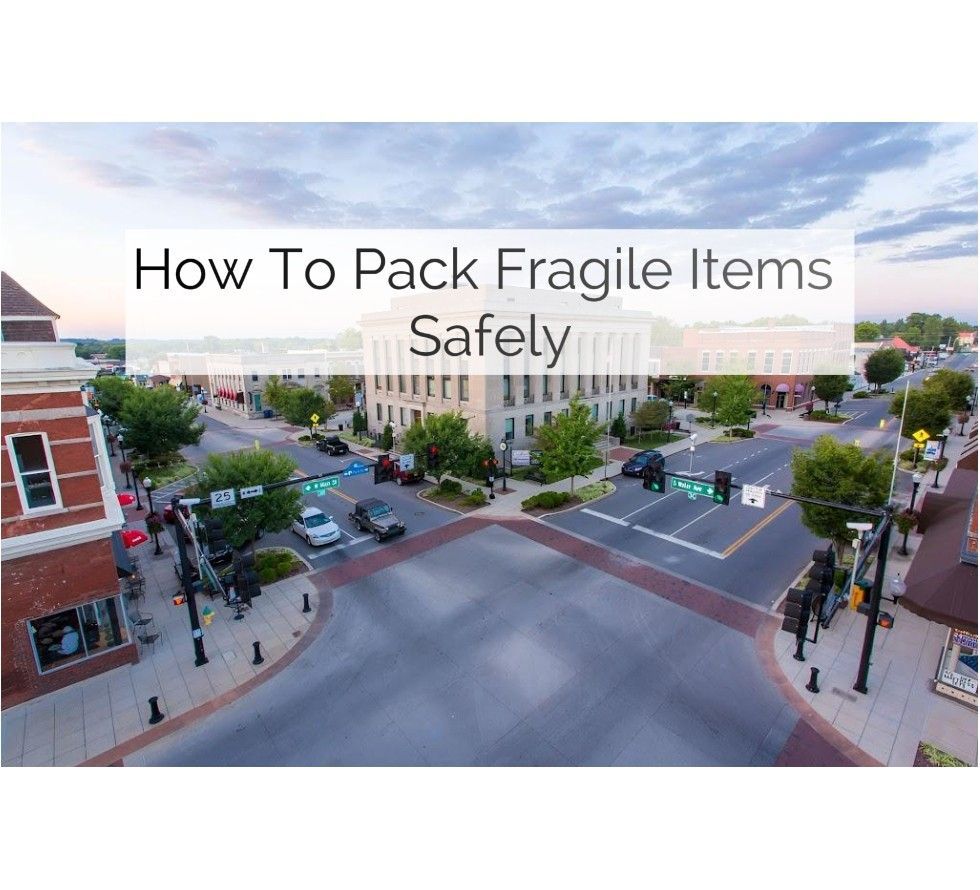BLOGS

Moving can be an exciting new chapter, but the thought of packing delicate and cherished possessions often brings a wave of anxiety. From antique vases to irreplaceable heirlooms and everyday dinnerware, ensuring these items arrive at your new home intact is a top priority. A single broken item can turn excitement into frustration, highlighting the critical importance of proper packing. Knowing to pack fragile items safely is an art form that, when mastered, can save you time, stress, and potential financial loss. It's not just about throwing some bubble wrap around an object; it's about understanding the unique needs of each item, selecting the right materials, and employing proven techniques. This will walk you through everything you need to know to protect your most vulnerable belongings. At Nashville Master Movers LLC, a fully licensed and insured residential moving company, our experienced crews and proven safety record ensure your next move is smooth, secure, and stress-free. We understand the value you place on your possessions. Our goal is to provide you with the expert knowledge and resources necessary for a worry-free relocation, whether you're handling the packing yourself or opting for professional assistance. What are considered fragile items when moving? Fragile items are anything easily broken, chipped, or damaged during transit due to their delicate nature. This includes a wide range of household goods. Common examples of fragile items include glassware (drinking glasses, wine glasses, vases), ceramics (plates, bowls, decorative figures), electronics (televisions, computers, monitors), mirrors, framed artwork, lamps, collectibles, and any items made of porcelain, crystal, or thin glass. Even seemingly sturdy items with delicate components, like chandeliers or certain musical instruments, fall into this category. What packing materials do I need for fragile items? To effectively pack fragile items safely, you will need a specific set of high-quality packing materials designed to provide maximum protection. Using the right materials is paramount. Sturdy Moving Boxes: Always opt for new, double-walled corrugated boxes for fragile items. Used boxes may have compromised structural integrity. Look for specialized dish pack boxes or cell kits for glassware. Packing Paper/Newsprint: Unprinted newsprint or packing paper is ideal for wrapping individual items and filling voids. It's clean and won't transfer ink like a newspaper. Bubble Wrap: Essential for cushioning. Comes in various bubble sizes; smaller bubbles are good for delicate items, larger bubbles for bulkier or more robust fragile pieces. Packing Tape: Strong, wide packing tape is crucial for sealing boxes securely. Markers: For clearly labeling "FRAGILE" on all sides of the box. Scissors/Box Cutter: For cutting tape and packing materials. At Nashville Master Movers LLC We offer Moving Supplies , including boxes, shrink wrap, and bubble wrap, our experienced team handles everything from fragile items to heavy furniture, ensuring your belongings are safe and secure.

Moving can be an exciting , albeit sometimes daunting, endeavor. When your moving plans align with peak season—typically the warmer months from May to September—the excitement can be quickly overshadowed by the prospect of higher costs and limited availability. During this bustling period, demand for moving services skyrockets, often leading to increased prices for everything from moving trucks to professional movers. However, a peak season move doesn't have to drain your bank account. With strategic planning, smart choices , and a few insider tips, you can navigate the busy moving landscape without breaking the bank. This will help you understand the dynamics of peak season moving and provide actionable advice to keep your budget intact, ensuring a smooth and affordable transition to your new home. At Nashville Master Movers, we understand the challenges of moving at any time of year, especially during the busy summer months. Our goal is to empower you with the knowledge and resources to make your move as stress-free and cost-effective as possible. What Makes Peak Moving Season So Expensive? Peak moving season is expensive primarily due to high demand and limited supply. During the warmer months, more people tend to move for various reasons, including school holidays, better weather conditions, and lease cycles. Understanding the need for budgeting when embarking on a long-distance move can significantly affect the overall moving experience. The influx of moving requests during this period creates a competitive market. Moving companies, rental truck agencies, and even packing supply stores experience a surge in business. This increased demand allows service providers to charge premium rates. Additionally, the availability of moving crews and vehicles becomes scarcer, leading to higher prices for last-minute bookings. According to industry statistics, moving costs can increase by 20-30% during peak season compared to off-peak times. When exactly is Peak Moving Season? Peak moving season generally runs from late May through early September. Specifically, the busiest times are typically Memorial Day weekend, the end of the month, and any federal holidays during this period. The months of June, July, and August are consistently the busiest for the moving industry. Weekends, particularly Fridays and Saturdays, are also in high demand during these months. Understanding these peak times is crucial for anyone looking to move during peak season on a budget, as it allows for proactive planning to secure better rates and availability. How Can I Save Money on Moving Supplies During Peak Season? You can save money on moving supplies during peak season by sourcing free or discounted boxes, utilizing household items for packing, and avoiding last-minute purchases. Instead of buying all new supplies, consider these budget-friendly options: Scout for Free Boxes: Check local grocery stores, liquor stores, and big-box retailers. They often have an abundance of sturdy cardboard boxes they're happy to give away. Online community groups (like Nextdoor or Facebook Marketplace) are also great places to find people giving away moving boxes. Repurpose Household Items: Use towels, blankets, and clothing to wrap fragile items instead of buying bubble wrap. Suitcases, hampers, and laundry baskets can double as moving containers for smaller items. Compare Prices for New Supplies: If you do need to buy new supplies (like packing tape, bubble wrap, or specialty boxes), compare prices online and at different retailers. Buying in bulk can sometimes offer savings. Rent Reusable Bins: Some companies offer reusable plastic moving bins for rent. While there's a cost, it can sometimes be more economical and environmentally friendly than purchasing and disposing of countless cardboard boxes, especially for a large move. By choosing eco-friendly local moving methods, we help protect the planet and create healthier homes. What's the Best Way to Book Movers on a Budget During Peak Season? The best way to book movers on a budget during peak season is to book as far in advance as possible, request multiple quotes, and consider off-peak days or times. Here's a breakdown of strategies: Book Early: This is perhaps the most critical tip for how to move during peak season on a budget. As soon as you know your moving date, ideally 8-12 weeks in advance, start contacting moving companies. Early booking often secures better rates and guarantees availability. Get Multiple Quotes: Don't settle for the first quote you receive. Contact at least three to five different moving companies, including reputable local services like Nashville Master Movers. Compare their services, pricing structures, and included insurance. Be wary of quotes that seem too good to be true, as they might indicate hidden fees or less reliable service. Be Flexible with Your Move Date: If possible, try to move on a weekday (Monday-Thursday) rather than a weekend, and avoid the beginning or end of the month. These "off-peak" days within the peak season are generally less expensive. Consider a Hybrid Approach: For some items, you might hire professional movers, while for others, you can manage yourself. For example, Nashville Master Movers offers flexible services, from full-service packing and moving to labor-only assistance for loading and unloading your rental truck. This can significantly reduce costs. How Can Decluttering Save Me Money When Moving? Decluttering significantly saves money when moving by reducing the volume and weight of items you need to transport, which directly impacts moving costs. Most moving companies base their quotes on the weight or volume of your belongings. The less you have to move, the less you'll pay. Here’s how to maximize your savings through decluttering:

This charming "City by the Lake" offers a wonderful mix of rich history, outdoor fun, and activities for the whole family. From peaceful lakeside getaways to exciting cultural experiences it truly has something for everyone. Hendersonville, TN , often called a Nashville subur b, has grown significantly while maintaining its unique small-town feel. It's known for its beautiful Old Hickory Lake shoreline and proximity to Nashville, making it a desirable place for families and individuals. Understanding what makes a city tick, from its historical roots to its current entertainment options, is key to a successful move. Immerse Yourself in Hendersonville's Rich History Hendersonville, TN, isn't just a scenic lakeside city; it's also a place deeply rooted in American history, particularly that of Tennessee's early frontier and the Civil War era. Exploring its historical sites provides a unique insight into the lives of early settlers, important figures, and the events that shaped this region.

Spring in Spring Hill, TN, brings a burst of life, color, and an incredible array of local events. From outdoor festivals to community gatherings, this charming Middle Tennessee city truly comes alive. If you're looking to embrace the warmer weather and connect with the vibrant spirit of Spring Hill, you're in the right place. Why Spring Hill, TN, is a Hub for Spring Events Spring Hill, Tennessee , has earned a reputation as a thriving community, and a big part of that appeal comes from its lively event scene, especially during the spring. There are several key reasons why this city stands out as a hub for springtime festivities: Community-Focused Atmosphere: Spring Hill boasts a strong sense of community. Residents actively participate in and support local events, creating a welcoming and friendly environment. This strong community bond encourages the planning and execution of numerous events throughout the year, with spring being a peak season. Dedicated Parks and Recreation Department: The city's Parks and Recreation department plays a crucial role in organizing and hosting many public events. They manage well-maintained parks and facilities that are perfect venues for outdoor festivals, concerts, and family-friendly activities. Their dedication ensures a packed calendar of engaging options for residents and visitors alike. Support from Local Businesses: Spring Hill's local businesses are often major sponsors and participants in spring events. This collaboration enriches the events, provides diverse offerings, and helps to strengthen the local economy. From food vendors to craftspeople, their involvement adds to the unique flavor of each gathering. Beautiful Natural Settings: With its picturesque landscapes and pleasant spring weather, Spring Hill provides an ideal backdrop for outdoor events. The city's green spaces and open areas are perfectly suited for festivals, markets, and recreational activities, making it enjoyable for everyone to get outside and participate. Accessibility and Growth: Spring Hill's strategic location in Middle Tennessee, coupled with its rapid growth, means more people are moving to the area and looking for ways to connect with their new community. Events serve as excellent opportunities for newcomers to meet neighbors, discover local amenities, and truly feel at home. Must-Attend Spring Festivals and Fairs in Spring Hill, TN As the weather warms and flowers bloom, Spring Hill truly shines with its lineup of exciting spring festivals and fairs. These events are not just about entertainment; they're a fantastic way to immerse yourself in the local culture, meet new people, and experience the vibrant community spirit. These gatherings often bring together local businesses, artists, and food vendors, offering a true taste of what makes Spring Hill unique.







